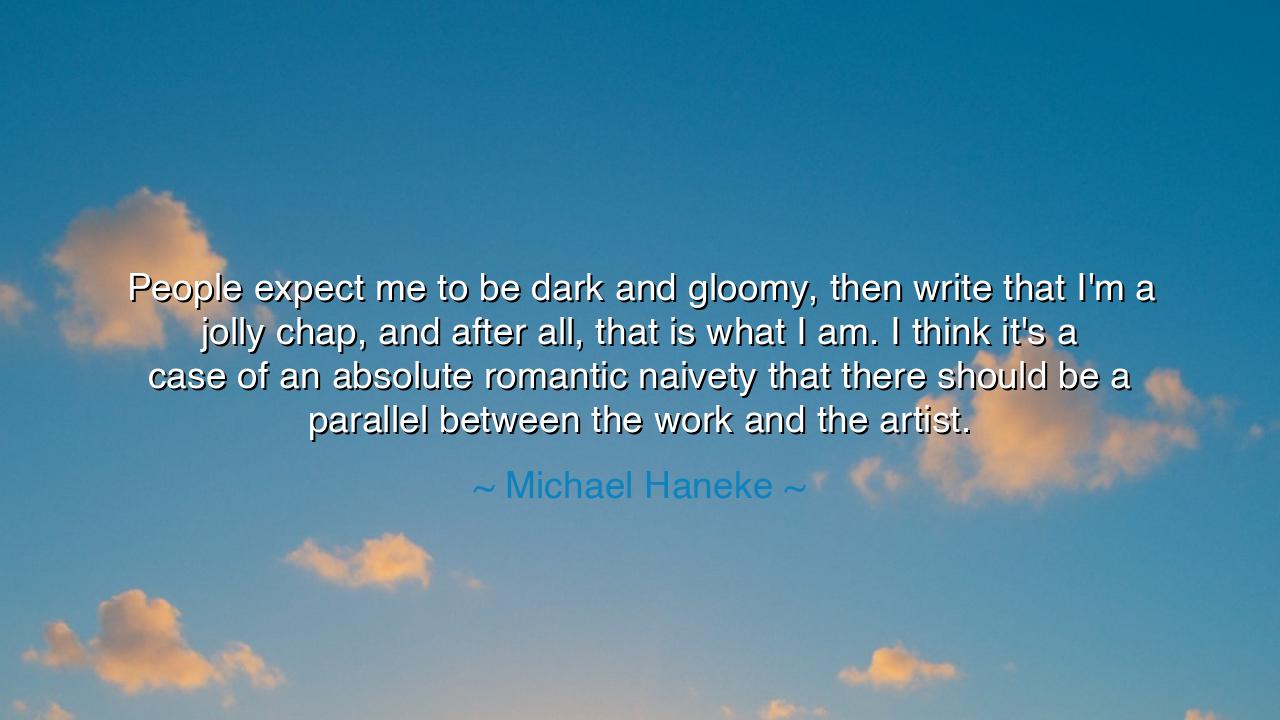
People expect me to be dark and gloomy, then write that I'm a
People expect me to be dark and gloomy, then write that I'm a jolly chap, and after all, that is what I am. I think it's a case of an absolute romantic naivety that there should be a parallel between the work and the artist.






“People expect me to be dark and gloomy, then write that I’m a jolly chap, and after all, that is what I am. I think it’s a case of an absolute romantic naivety that there should be a parallel between the work and the artist.” Thus spoke Michael Haneke, whose films descend into shadow, yet whose life breathes laughter and warmth. His words pierce through a timeless illusion—that the creator must be the mirror of his creation, that the painter of tragedy must live in sorrow, that the teller of horror must dwell in despair. Haneke calls this a naivety, a false expectation born of the human desire to simplify what is complex.
The origin of this illusion lies deep in the history of art. From the earliest times, men believed the bard must be like his song, the tragedian like his mask. When Sophocles wrote of Oedipus, audiences imagined he must be a man drenched in grief. When Dostoevsky painted the tormented Raskolnikov, many assumed he himself must live forever on the brink of madness. But the truth is more subtle: the artist is a vessel who channels forces greater than himself, and his work need not echo his own life, but may instead give voice to what he observes, imagines, or fears.
Haneke’s words remind us of Shakespeare, whose tragedies—the storm of Macbeth, the despair of Hamlet, the agony of Lear—would suggest a soul broken by sorrow. Yet Shakespeare’s contemporaries remembered him as a man genial, beloved in company, a spirit capable of both levity and depth. The darkness of the work did not consume the man. Indeed, perhaps it was his very cheerfulness that gave him strength to explore the shadows so unflinchingly, knowing he could return to the light when the curtain fell.
History is filled with other such examples. Franz Kafka, whose writings appear suffocated by alienation, was by many accounts witty and gentle in person. Alfred Hitchcock, master of suspense, loved practical jokes and laughter. These men were not imprisoned in their art. Their gloomy work was not the portrait of their souls, but the gift of their imagination—the offering of their craft to the world’s hunger for stories that explored fear, despair, and mystery. The mistake lies in believing that an artist’s creation is always his confession.
The romantic naivety Haneke names is the longing to see the world as neat and symmetrical. We wish to believe that the poet of love must be a lover, the painter of horror must be haunted, the singer of joy must live without sorrow. But life is not so simple. The heart of the artist may remain untouched by the storms he conjures, just as the sailor can describe the sea without drowning in it. To assume otherwise is to misunderstand both art and humanity.
The lesson here is clear: do not confuse the mask with the man, nor the creation with the creator. Allow the work to stand in its own right, a thing independent, shaped by skill, imagination, and insight, not merely by autobiography. And when you look upon an artist, do not bind them to their art, but grant them the dignity of complexity—that they may laugh even while painting sorrow, and live lightly even while writing of despair.
Practical action flows from this: free yourself from the trap of expecting simple parallels in others, and in yourself. You may create beauty even if you feel broken, or depict horror even if you live in joy. Do not limit your art—or your life—by insisting it reflect only your daily moods. Instead, embrace the breadth of imagination, which allows you to step into shadows and light alike.
So, children of tomorrow, remember Haneke’s wisdom. The artist is not his work, and the soul is greater than any one expression. Cast off the chains of romantic naivety, and let both people and art exist in their full, complicated truth. For it is in this separation that we find freedom—freedom for the artist to create, and freedom for us all to understand.






AAdministratorAdministrator
Welcome, honored guests. Please leave a comment, we will respond soon